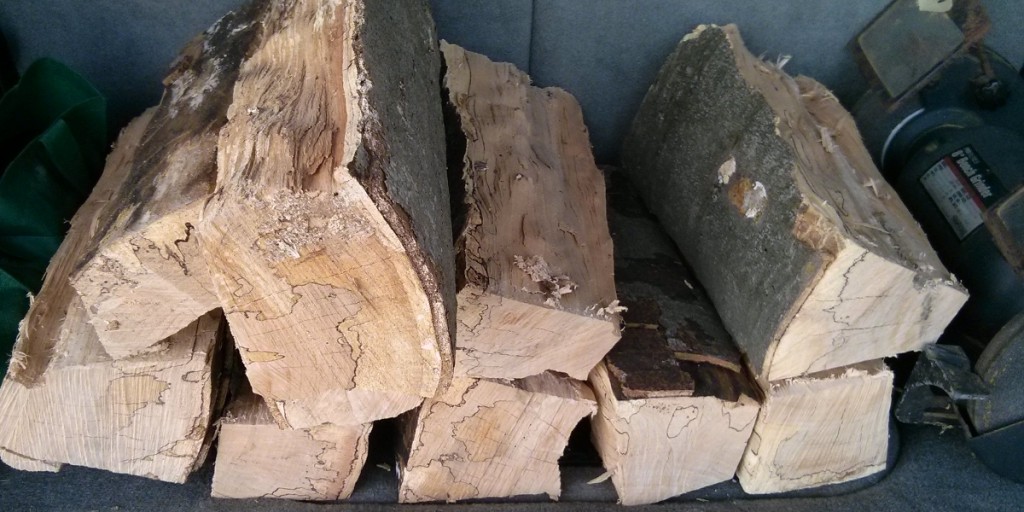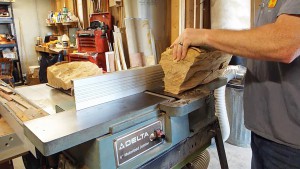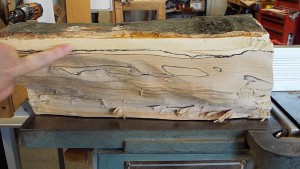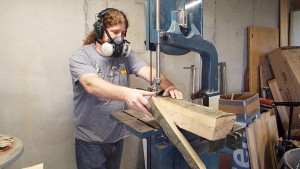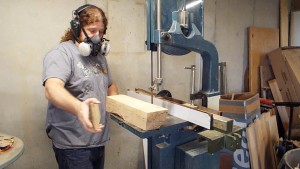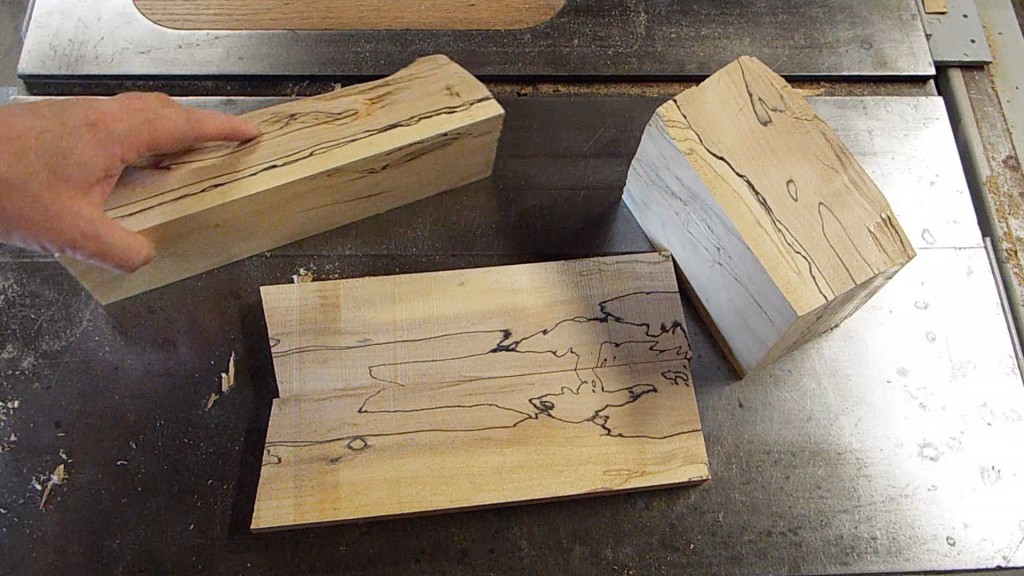Between my wife and I our need for wood to turn is pretty insatiable. Since we live on farmland with only a small area we lovingly refer to as the Quarter Acre Wood which is mostly weed trees we need a source of wood to keep up our hobby. We can buy wood commercially or at retail, which has the advantage of some exotics, or species available in other regions of the country, or figured woods. Prices tend to reflect the potential beauty of the blanks though and would quickly bankrupt us or diminish our opportunity to turn. Our preferred method to acquire wood is to keep an eye out locally for trees which have come down and make an offer to the the owner of the property. Our deal basically is that we will pick out pieces some of the tree that we are interested in and the first item we turn from the wood is returned as a reminder of the tree to the person who owned the property.
Harvesting
I want to go into detail about what the property owner can expect. I will usually show up with my vehicle with either a hitch carrier or a trailer, depending on how much wood I think I might collect. The first order is to scout the area around the tree to determine if I can safely work on the tree. That means anything entangled with power lines, uneven ground, or other dangerous settings are out. If it is safe I will then consider the tree including species, size, figure, and other aspects which I will go into detail below. If everything looks good on my end I will let the property owner know and what to expect. Specifically all children need to be safely away from the work site and any adults need to be aware and careful while I am working. Since my goal is to just acquire the wood that would be suitable for turning I do not take the whole tree. While I may do some de-limbing to get into a safe position for a cut I am not processing the whole tree into firewood. In the end I usually grab a couple larger 4′ – 6′ section of the trunk and possibly a couple crotch pieces. That will typically leave plenty of usable wood for any firewood scroungers to still be interested in the remaining wood.
Interesting Wood
So how do you know if a tree is something that I might be interested in? Well, there are a number of criteria I mentioned above which I mentioned which were species, size, features, and figure. I will cover a few other less commonly seen characteristics which might also pique my interest.
Species
The species of wood is one the type of tree. For woodturning hardwoods (think deciduous trees) are best where softwoods (evergreens) tend not to turn very well. Unless there is something specific about a softwood tree I are not going to be interested. With hardwoods there is a great variety of species which are good candidates for turning. The most common ones are listed below, but if I haven’t turned it before I am usually willing to give it a try.
- Cherry
- Maple
- Walnut
- Birch
Some of the less pleasant hardwoods to turn are stringy hardwoods. In general these do not turn well, are hard on the tools, or have a tendency to check or crack in unexpected ways. That isn’t to say I won’t be interested if there is some other interesting aspect, but I will quite often pass over these species.
- Oaks
- Ash
Size
There are two aspects to size which are important to a wood turner. The obvious is the diameter of the tree, but the other less obvious and cause of most wasted trips is length. In general I am looking for trunks which are a minimum of 10″ in diameter. Anything less and the resulting bowl is just going to be too small. I might pick up a couple branches which are smaller than 10″, but those usually have specific purposes.
The length is the biggest problem that I run into when going to check out a tree. Quite often the property owner has already cut the trunk into firewood length. While part of my processing of the trunk section does include this step, unless I am on site within hours of those cuts the wood already begins to dry and check on those short sections, which pretty much destroys the wood for turning purposes. I’ve included a video below explaining the process I use to prepare bowl blanks which covers some of my process.
Features and Figure
There are several types of figure which I am looking for when acquiring wood for bowls, vases, or hollow forms. Some of the features are quite apparent when looking at the tree where others are not visible until you actually get into the wood.
Burls
Burls are usually “ugly” knobs or bumps hanging off of a tree. A common cause for burls is insect or other types of damage when the tree is younger. The tree grows around that damage and causes unusual growth around the area where the grain direction changes in irregular patterns. This can produce a very pretty bowl when turned to display the effect.
Crotch
Pretty much every tree has branches, but a crotch is where the trunk splits into two. An ideal crotch for turning is where both of the divided trunks grow to similar sizes. These pieces are very desirable when it comes to woods like walnut which feather the grain through the center of the crotch. One of my favorite bowls I’ve turned was a walnut crotch which I turned into a heart shaped bowl.
Figure
Figure is usually referring to the grain of the wood. Burls are the the only source oddly aligned grain. Maple seems especially prone to interesting figure or perhaps just shows it off. A search on google images for the word maple and any of these terms will show some of the great variety of figure seen in wood.
- Ambrosia Maple
- Tiger Maple
- Birds Eye Maple
- Quilted Maple
Spalting
Some woods are prone to spalting, which is part of the decaying process. The wood can become infected by various types of mold where multiple disparate type of mold start to interact. Dark lines form between the colonies which can be quite striking. Maple, birch, and box elder are especially prone to this while the tree is still standing. Spalting can be promoted by taking a maple tree in the spring while the sap is beginning to flow and left in the right conditions.
Result
So in the end our deal winds up with the property owner receiving a bowl, vase, or hollow form as a reminder of the tree. If you would like to see some of the items we have turned you can look in our shop on the site to get an idea of what we turn. I receive a number of pieces of wood which my wife or I can use to turn for future projects. While we keep a couple of our pieces we usually try to sell them at local craft show or on our website in the shop.

